



Gumboro control: Hatchery vaccination vs. Field Vaccination
Infectious bursal disease virus (IBDV) is a pathogen that can persist in poultry houses and withstand usual disinfectants. Therefore, it represents a permanent threat to flock performance. Several vaccine options are available to control Infectious Bursal Disease (IBD), commonly known as Gumboro disease. Two of those options are compared here: the conventional IBD live attenuated and the immune-complex IBD vaccines.Vaccine choices
Conventional live attenuated Gumboro vaccines are live attenuated Gumboro viruses that replicate in the bursa of Fabricius, resulting in immunity generated by replicating the whole virus. There are different IBD vaccine virus strains available with different levels of attenuation. Vaccine types are categorized as 'Mild', which are highly attenuated, 'Intermediate' which are very attenuated, 'Intermediate Plus', which are moderately attenuated and 'Hot', which are poorly attenuated. These conventional live attenuated vaccines are commonly administered via drinking water. However, the residual maternally-derived antibodies (MDA) interfere with the vaccine virus strain replication. To address this issue, it is required to measure the antibody levels in 1-3 day-old chicks to calculate the best vaccination age when MDA is at a permissible level for vaccine virus infection and replication by using the Deventer formula. It is common in broilers to administer 2 drinking water vaccinations with 4 to 5-days interval due to the chick’s source diversity from multiple breeder flocks with different IBD immunity levels to IBD.
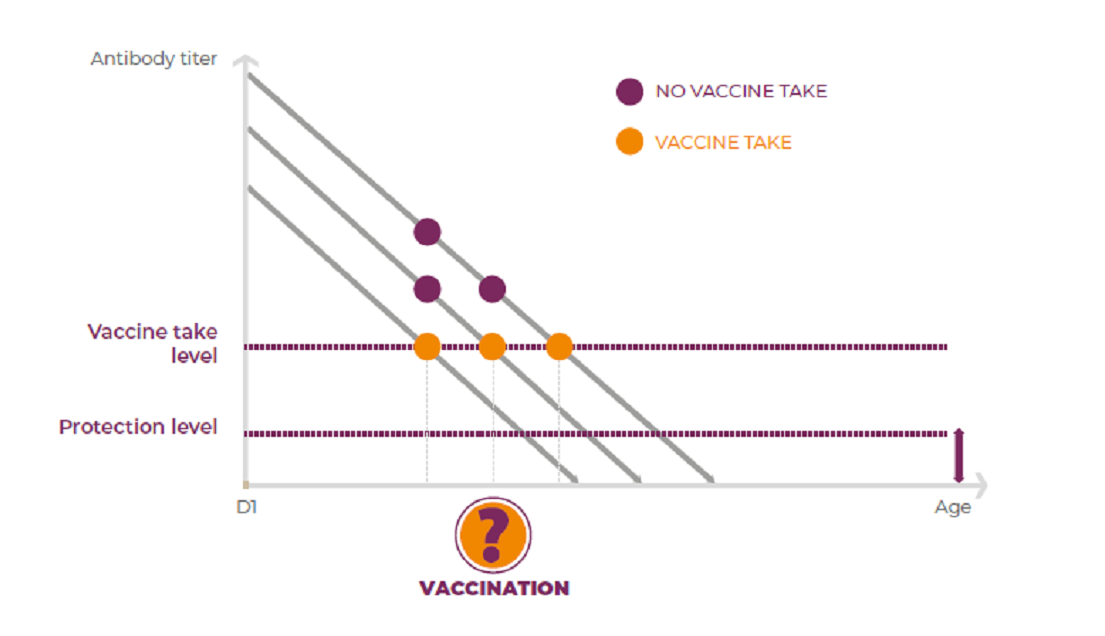
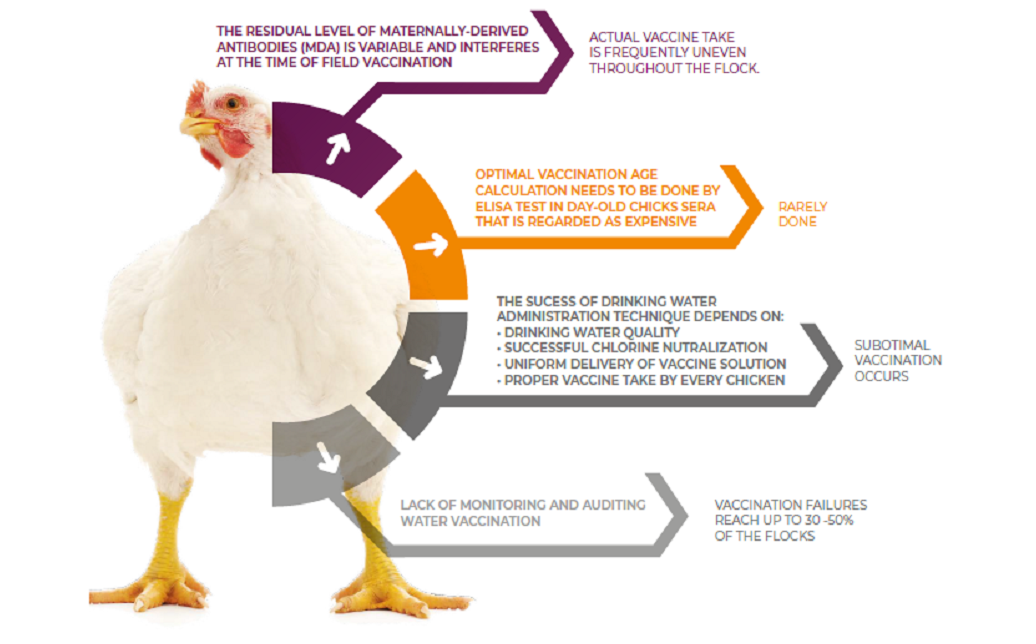
Immune-complex IBD vaccine (Transmune): A suspension of live attenuated Gumboro virus of the Intermediate Plus-type is mixed in well-defined proportions with antiserum against IBD. Over 100 formulations were tested to finally obtain the proper virus-antibody balance. This way, the vaccine virus is covered with antibodies and consequently protected from recognition by the chicken’s immune system by specific Immunoglobulins (Called “Virus Protecting Immunoglobulins” or VPI). Following injection, VPI are catabolyzed simultaneously as the passively transferred MDA, and the vaccine virus is released. The take of the vaccine (that corresponds to a replication of the vaccine virus in the bursa) occurs when the MDA level has reached a permissible level that allows the vaccine strain to completely colonize the bursa fully and protecting it against all field IBD viruses.
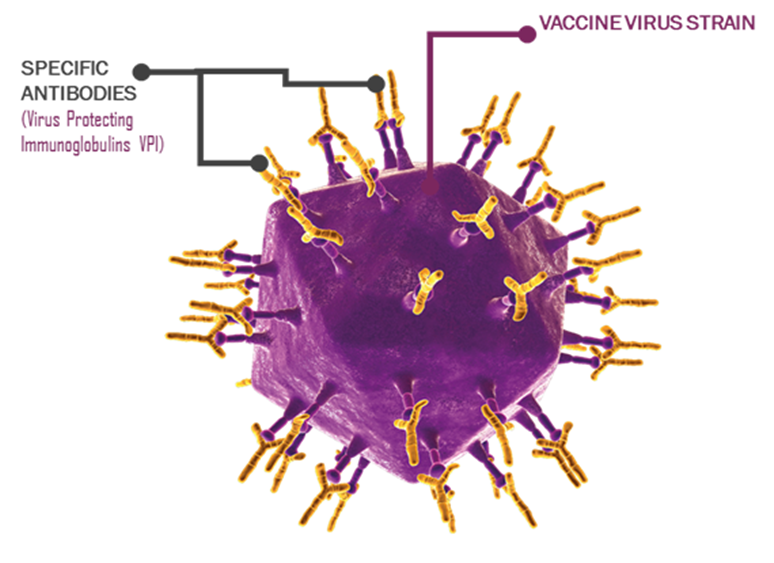
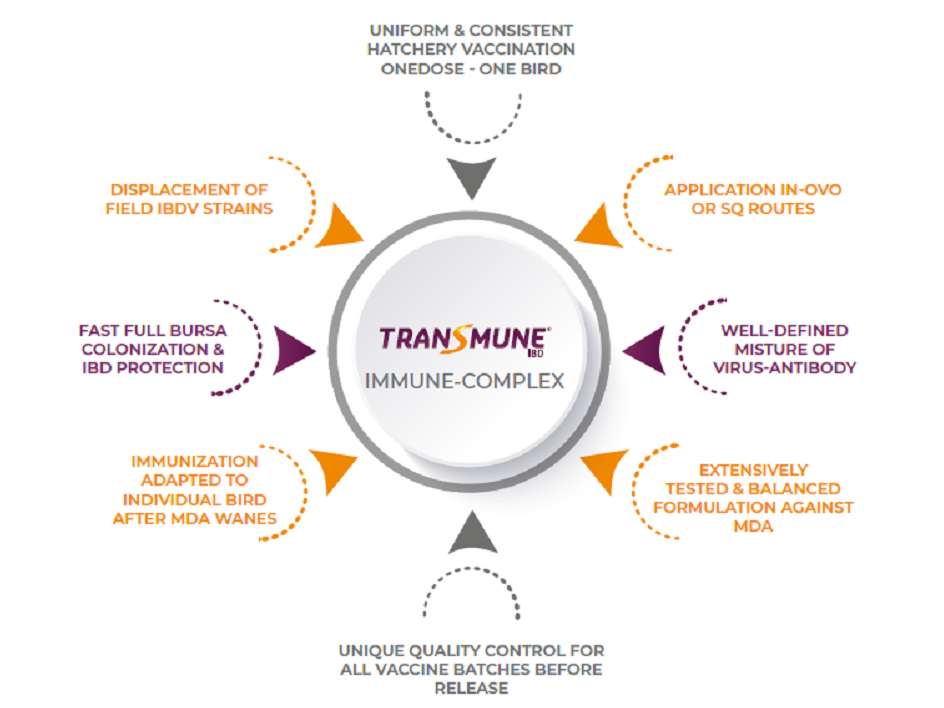
The benefits of this technology are that the quality and strength of the protection comes from replication of a complete intermediate plus-type live IBD vaccine strain, resulting in full protection against clinical signs, complete resistance against infection, high reduction of shedding and no selection of farm IBDV population. The vaccine adapts to each chicken’s immune status and replicates at the optimum time when MDA levels are at a lower level. Due to the VPI, the vaccine does not get neutralized by MDA, allowing it to be applied in the presence of passive immunity at the hatchery by In-Ovo or sub-cutaneous application. Also, as the vaccine is injected at the hatchery, the reliability, quality, uniformity and consistency of the vaccine application is improved compared to field drinking water vaccination. Finally, the vaccine strain is released and fully colonizes the bursa, blocking the entry of field IBD viruses. The safety of Transmune is similar to the safety of intermediate plus-type Gumboro vaccines. An additional advantage is that every individual chicken is immunized with the same, well-controlled dose of vaccine. By the end of 2020, more than 115 billion birds vaccinated worldwide over the years adding another proof of confidence brought by the poultry industry on Transmune.
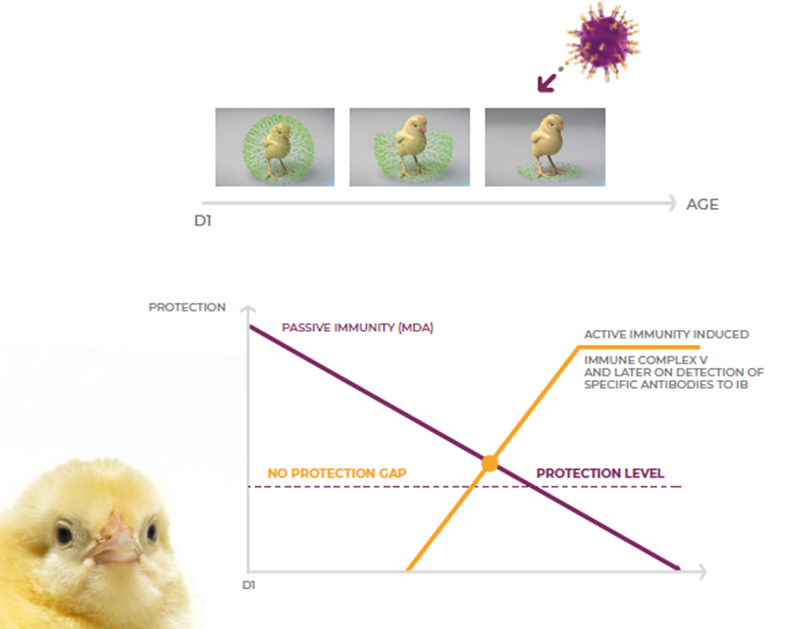
Comparative serological responses
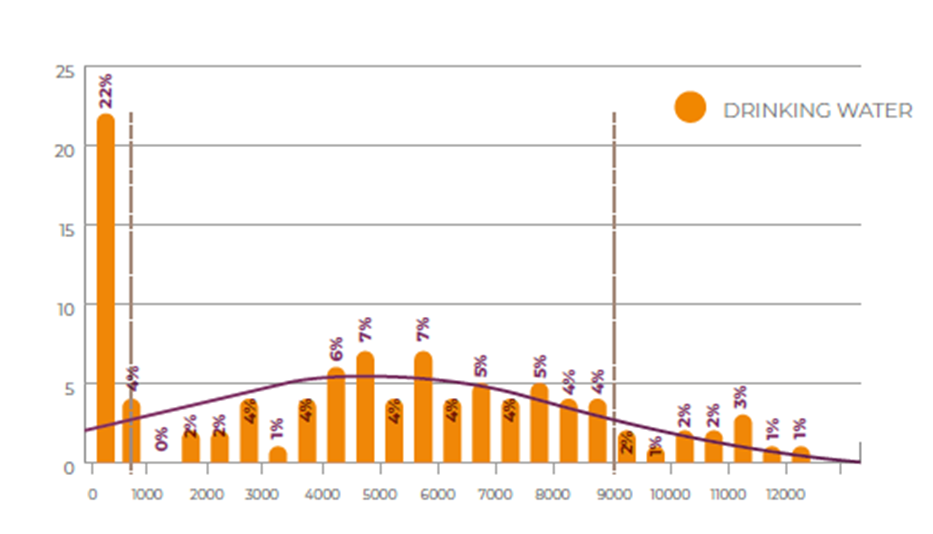
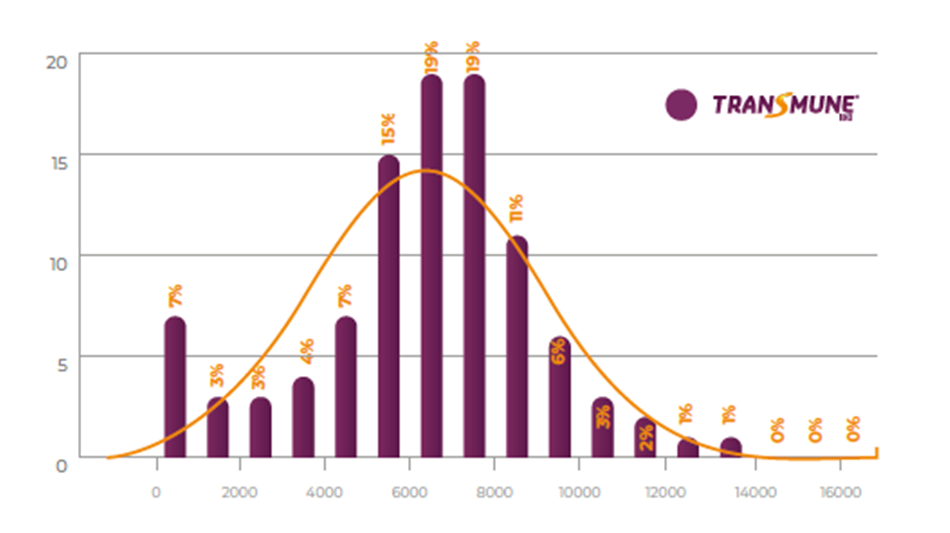
Distribution of titers in Drinking Water-Lukert strain (Left) and Transmune (Right) vaccinated groups. A Number of flocks (%) falling into each titer interval. Transmune achieves more regular immunization when compared to drinking water vaccines, without negative flocks. The Absence of stress and thirst during application complies with welfare standards: “Freedom from hunger or thirst by ad-libitum access to fresh water and a diet to maintain full health and vigor.” Transmune can be administered in the presence of passive immunity, so it is compatible with the breeders’ vaccination program. At least 25% better titer distribution versus drinking water vaccination is observed. This comparative serological study was conducted in Europe during 2009 - 2010, in a total of 210 commercial broiler flocks processed between 40-45 days of age, using the Biochek Elisa kit.
Reduction of shedding – Field Experience
A field study conducted in Europe confirms the difficulties associated with field vaccination via drinking water and its inconsistent efficacy. The detection of IBDV field strains is noticeable with this vaccination route, especially when using highly attenuated vaccine strains, which are very susceptible to maternally-derived antibodies and their uneven ability to colonize the bursa entirely. Additionally, more than one field vaccination against IBD does not improve IBD protection against field viruses. Contrary to this poor field efficacy outcome is hatchery vaccination with the immune-complex vaccine, which is protected against the maternally-derived antibodies.
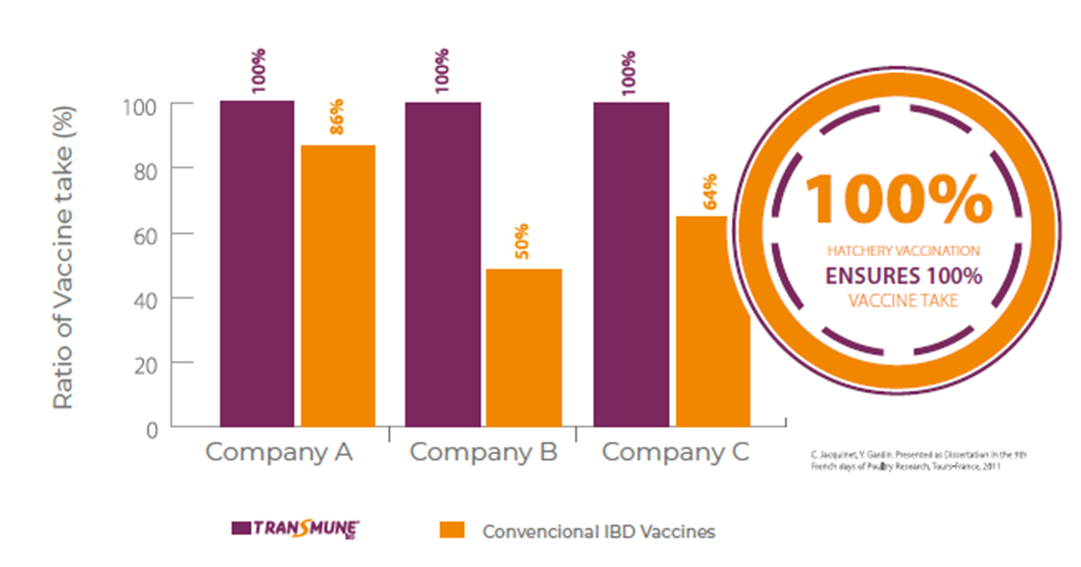
There is a marked difference between mass vaccinations via drinking water in the field versus the individual vaccination at the hatchery which allows the immune-complex vaccine to entirely cover the flock. The immune complex will be released accordingly with the individual permissible level of antibodies of each chicken, to release the vaccine strain and to fully colonize the bursa. Follow-up of this vaccination dynamic has been proven through different diagnostic methods (Serology, histopathology and PCR).
Economic benefits
Large field trials comparing Transmune vs. Drinking Water vaccination in commercial broiler operations were conducted in 7 countries, showing consistently favourable results on main production performance parameters with the consequent economic benefits (Euros/ 1000 birds) as shown in table 2. These trials were conducted in various epidemiological conditions, and under different management practices which reinforces the consistent strength of Transmune in bringing value under the current broiler production conditions.
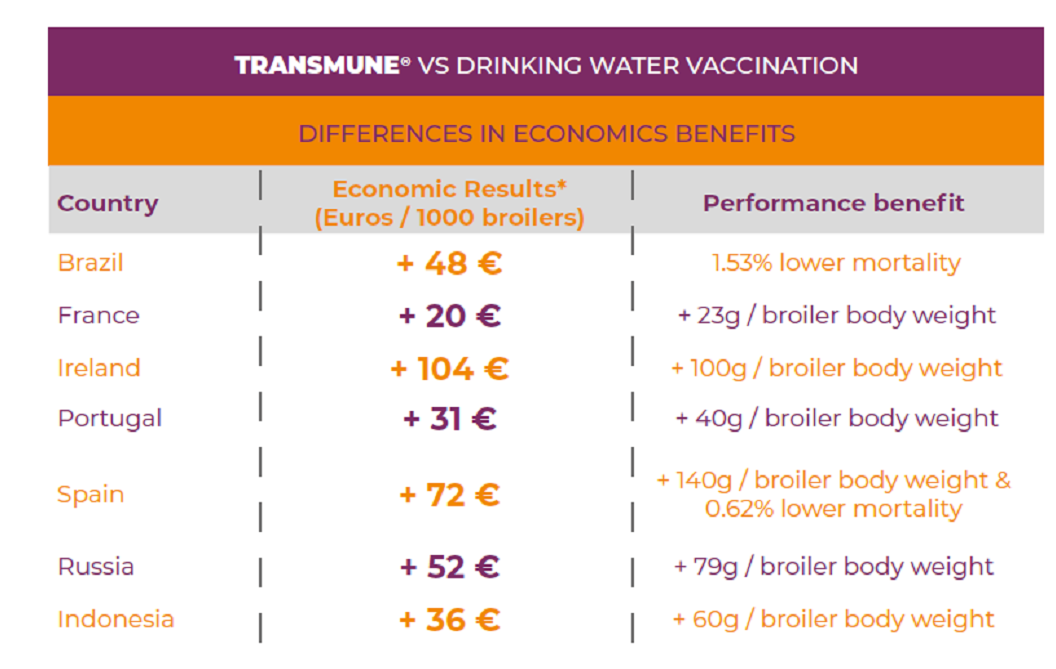
Summary
Gumboro disease represents a permanent threat to the flock’s health and performance. Proper selection and implementation of an effective IBD vaccine as part of the poultry health program will effectively control Gumboro disease and its negative impact on performance. Transmune, an immune-complex IBD vaccine, has unique features that effectively stop the Gumboro cycle favoring performance improvements with the consequent economic advantages.










